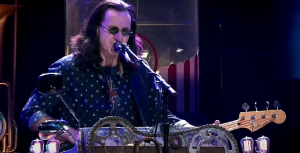3 ’60s One-Hit Wonders That Should Have Been Massive Hits

via RETROVISOR / YouTube
The 1960s are remembered as a golden era for music, an age when creativity seemed boundless and innovation defined the charts. Rock, soul, folk, and pop flourished side by side, and many of the names from that decade have since become legendary. Yet for every superstar who dominated radios and record stores, there were others who briefly brushed the spotlight before fading far too quickly.
Hidden within the fabric of the decade are songs that managed to break through, climbing into the Billboard Top 40, only to leave their creators behind as little more than trivia answers. These weren’t forgettable tracks—they resonated with audiences at the time and still hold their charm today. The real mystery is why those artists never managed to build the lasting careers their hits suggested they might.
This article revisits three such moments from the 1960s, spotlighting one-hit wonders that deserved much more than fleeting attention. Each of these songs carries the energy, originality, or sheer appeal that could have sustained a legacy, had circumstances played out differently. They remind us that the story of popular music is as much about what could have been as what actually endured.
The Wailers
When The Wailers (not Bob Marley’s band, but the Tacoma, Washington rockers) landed on the Billboard charts with “Tall Cool One,” it seemed like the beginning of something big. The instrumental track had all the hallmarks of a timeless hit: a driving rhythm, sharp saxophone lines, and an energy that carried garage rock into the national spotlight. Cracking the Top 40 was no small feat, and it showed that the group had the raw spark to catch attention beyond the Pacific Northwest.
Listening to “Tall Cool One” today, it still feels immediate and alive. There’s a certain rugged charm in its sound, one that bridges surf rock and the primal roots of what would later become punk. It wasn’t polished pop, but it didn’t need to be—it thrived on grit, momentum, and the sense that it belonged to the underground. In that way, The Wailers captured a piece of 1960s culture that was both ahead of its time and deeply rooted in it.
Unfortunately, their national breakthrough didn’t lead to sustained stardom. Despite being hugely influential in the Seattle scene and inspiring generations of musicians, The Wailers never became a household name. That’s part of the tragedy of one-hit wonders: the music itself can be groundbreaking, but without the right timing, exposure, or sheer luck, the moment passes too quickly. With a song like “Tall Cool One,” they should have been remembered as more than a footnote.
Merrilee Rush
In 1968, Merrilee Rush soared into the spotlight with “Angel of the Morning,” a song that blended tender vulnerability with quiet strength. It wasn’t just another pop single; it was an anthem of empowerment that resonated with listeners at the height of the decade’s social and cultural shifts. For a brief moment, Rush stood alongside the era’s most commanding female voices, proving she had both the vocal range and presence to command attention.
Yet despite her breakout success, Rush never quite reached the level of stardom that her peers like Cher or Grace Slick enjoyed. Part of this may have been timing, part of it may have been industry dynamics, but what’s clear is that she had the talent to go further. Her magnetic stage presence and ability to bring emotional depth to her performances suggested an artist capable of building a long-lasting career on the national stage.
Even though she continued to perform regionally and sustain a rewarding career, Rush’s name doesn’t carry the same weight in popular memory as it should. “Angel of the Morning” remains a classic, a song that outlived the charts and found its place in the cultural fabric. Rush should have been more than a one-hit wonder—she should have been one of the defining female artists of her time.
Iron Butterfly
Iron Butterfly’s story is one of potential, influence, and the pitfalls of being in a rock band during a chaotic era. Best known for their sprawling 17-minute track “In-A-Gadda-Da-Vida,” the group etched themselves into music history as early architects of heavy rock. The song wasn’t just a hit; it was a statement, a psychedelic and bombastic experiment that paved the way for countless hard rock and metal acts that followed.
But as often happens, early success didn’t guarantee longevity. The band faced the familiar challenges of creative differences, bad luck, and the grueling realities of life on the road. Missing their shot at Woodstock due to a travel mishap didn’t help their momentum, and without cohesion among members, their career began to unravel. By 1971, only five years after their debut, Iron Butterfly had fizzled out.
Despite their short-lived run, the band’s influence was enormous. “In-A-Gadda-Da-Vida” remains a rite of passage for fans of psychedelic and heavy rock, and its echoes can be heard in the music of bands that came long after. Iron Butterfly may be remembered as a one-hit wonder, but in truth, they helped define an entire genre. If any one-hit wonder from the 1960s deserved more recognition and longevity, it was them.














